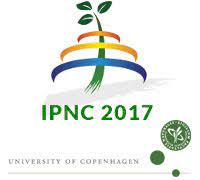Ver ítem
- xmlui.general.dspace_homeCentros Regionales y EEAsCentro Regional Patagonia SurEEA Santa CruzPresentaciones a congresosxmlui.ArtifactBrowser.ItemViewer.trail
- Inicio
- Centros Regionales y EEAs
- Centro Regional Patagonia Sur
- EEA Santa Cruz
- Presentaciones a congresos
- Ver ítem
Nutrient resorption in two co existing Nothofagus species in southern Patagonia.
Resumen
Nutrient resorption understood as the “movement” of nutrients from leaves prior to abscission towards other tissues or internal stores has been suggested to be a key component of nutrient conservation in deciduous forest species (Ares and Gleason 2007). This strategy allows plants to use these nutrients for new growth or store, hence decreasing their dependence on soil nutrient availability. Native forests in southern Argentine Patagonia cover
[ver mas...]
Nutrient resorption understood as the “movement” of nutrients from leaves prior to abscission towards other tissues or internal stores has been suggested to be a key component of nutrient conservation in deciduous forest species (Ares and Gleason 2007). This strategy allows plants to use these nutrients for new growth or store, hence decreasing their dependence on soil nutrient availability. Native forests in southern Argentine Patagonia cover approximately 1.2 million ha, corresponding more than 95% of these forests to the southern beeches Nothofagus pumilio (lenga) and Nothofagus antarctica (ñire) (Peri et al. 2016). In general, both deciduous species occupy places with different environmental conditions. N. pumilio forest are mostly found as pure stands in well drained soils, while N. antarctica, a more plastic and rustic species, is displaced to more unfavourable site conditions including rocky or poorly drained soils, and more xeric zones in the limit with the Patagonian steppe. Nevertheless, there are small transitional areas where both species can coͲexist using the same sources of resources. The objective of this study was to compare nutrient resorption of both species growing together in two contrasting situations of environmental conditions and forest productivity.
[Cerrar]

Autor
Fuente
Proceedings XVIII International Plant Nutrition Colloquium - IPNC 2017, University of Copenhagen, Copenhagen, Denmark, 21-24 August 2017. p. 875-876.
Fecha
2017-08-21
Editorial
University of Copenhagen
ISBN
978-87-996274-0-0
Formato
pdf
Tipo de documento
documento de conferencia
Palabras Claves
Derechos de acceso
Abierto
 Excepto donde se diga explicitamente, este item se publica bajo la siguiente descripción: Creative Commons Attribution-NonCommercial-ShareAlike 2.5 Unported (CC BY-NC-SA 2.5)
Excepto donde se diga explicitamente, este item se publica bajo la siguiente descripción: Creative Commons Attribution-NonCommercial-ShareAlike 2.5 Unported (CC BY-NC-SA 2.5)


